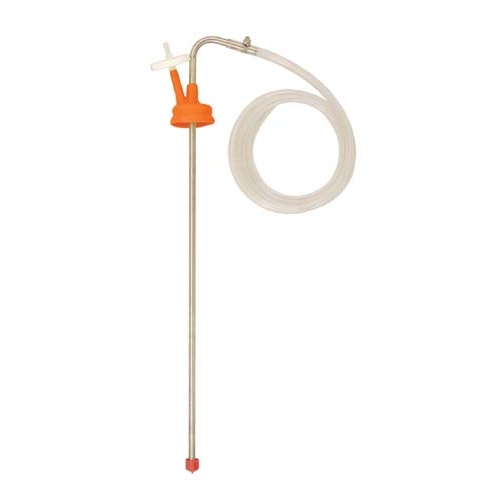HopHead73
Brewmaster at Jbyrd Brewing, Hophead
Brewed Trillium's Sleeper Street clone from BYO.
Recipe called for a technique I haven't tried before. After only 5 days of fermenting in the carboy it said to transfer to a keg and dry hop under pressure for about a week and then do a keg to keg transfer to serving keg and carbonate.
I've never pulled a beer off the yeast cake this early so I feel like it didn't get enough time for the yeast to clean themselves up.
After I transferred to the serving keg I opened up the dry hop keg and got a huge kick of hop aroma from the 5.5oz of El Dorado and 1oz of CTZ hops that were in there. However, when I poured a tasting glass I don't get that same aroma from the beer. I know its not carbonated enough to drive the aroma out, but what I do smell is a slight green apple smell and it had a very green flavor.
After being in the keezer for 3 days and starting to carbonate the flavor is getting somewhat better, but the smell is still there.
Suspect its Acetaldehyde since I pulled it off the yeast cake so fast.
Anyone have experience with this technique of dry hopping and kegging?
I know RDWHAHB, but just wanted to see other people's opinions if the flavor and smell will go away and become less green.
Would taking it out of the keezer for a few days at room temp help the yeast in suspension clean up?
Recipe called for a technique I haven't tried before. After only 5 days of fermenting in the carboy it said to transfer to a keg and dry hop under pressure for about a week and then do a keg to keg transfer to serving keg and carbonate.
I've never pulled a beer off the yeast cake this early so I feel like it didn't get enough time for the yeast to clean themselves up.
After I transferred to the serving keg I opened up the dry hop keg and got a huge kick of hop aroma from the 5.5oz of El Dorado and 1oz of CTZ hops that were in there. However, when I poured a tasting glass I don't get that same aroma from the beer. I know its not carbonated enough to drive the aroma out, but what I do smell is a slight green apple smell and it had a very green flavor.
After being in the keezer for 3 days and starting to carbonate the flavor is getting somewhat better, but the smell is still there.
Suspect its Acetaldehyde since I pulled it off the yeast cake so fast.
Anyone have experience with this technique of dry hopping and kegging?
I know RDWHAHB, but just wanted to see other people's opinions if the flavor and smell will go away and become less green.
Would taking it out of the keezer for a few days at room temp help the yeast in suspension clean up?




